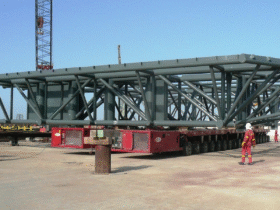In today’s modern workplaces, electricity is a vital component powering our operations, from powering computers to operating heavy machinery. While electricity is incredibly useful, it also presents significant hazards if not managed properly. Understanding these electrical hazards is crucial for maintaining a safe working environment for employees. This blog aims to explore various types of electrical hazards, their potential risks, and strategies for prevention. If you’re looking for expert insights on ensuring electrical safety in your workplace, consider consulting professionals who offer Electrical Installation Condition Reports in London.
Types of Electrical Hazards
- Electric Shock: Perhaps the most well-known electrical hazard, electric shock occurs when the body becomes part of the electrical circuit. Even low voltages can cause injury or death, depending on the circumstances. Common causes include faulty equipment, damaged insulation, or improper use of electrical appliances.
- Electrical Burns: When current flows through the body, it can cause burns, both internal and external. The severity of burns depends on the strength of the current and the duration of contact. Electrical burns may require immediate medical attention and can result in permanent damage or disfigurement.
- Arc Flashes and Arc Blasts: An arc flash is a sudden release of electrical energy through the air, which can produce intense heat and light. This phenomenon can cause severe burns, fires, and even explosions. Arc blasts are the explosive force that accompanies an arc flash, capable of causing serious injury or death to anyone nearby.
- Fire and Explosion: Electrical faults, such as short circuits or overloaded circuits, can lead to fires or explosions in the workplace. Electrical fires can spread rapidly and are often difficult to extinguish without specialized equipment.
Understanding the Risks
The risks associated with electrical hazards are significant and can impact both individuals and the entire workplace. Here are some key considerations:
- Direct Impact on Workers: Employees working with or near electrical equipment are directly at risk of injury or death from electric shock, burns, or arc flashes.
- Property Damage: Electrical fires or explosions can cause extensive damage to equipment, structures, and materials within the workplace, leading to operational disruptions and financial losses.
- Legal and Regulatory Compliance: Failure to comply with electrical safety standards and regulations can result in fines, legal liabilities, and damage to the organization’s reputation.
Prevention and Mitigation Strategies
To mitigate electrical hazards effectively, workplaces must implement comprehensive safety measures:
- Risk Assessment: Conducting regular risk assessments to identify potential electrical hazards and assess the associated risks is essential. This involves inspecting electrical equipment, identifying faulty wiring, and evaluating the electrical load on circuits.
- Training and Awareness: Educating employees about electrical hazards, safe work practices, and emergency procedures is crucial. Training should cover topics such as proper use of electrical equipment, recognizing warning signs of electrical problems, and responding to electrical emergencies.
- Electrical Safety Devices: Installing and maintaining safety devices such as ground fault circuit interrupters (GFCIs), circuit breakers, and surge proetctors can help prevent electric shocks, fires, and equipment damage.
- Proper Equipment Maintenance: Regularly inspecting and maintaining electrical equipment ensures that it operates safely and efficiently. This includes testing for insulation integrity, tightening connections, and replacing worn-out components.
- Personal Protective Equipment (PPE): Providing appropriate PPE, such as insulated gloves, goggles, and flame-resistant clothing, can help protect workers from electrical hazards when performing tasks involving electricity.
- Safe Work Practices: Establishing and enforcing safe work practices, such as de-energizing electrical equipment before maintenance or repairs, using lockout/tagout procedures, and avoiding overloading circuits, is essential for preventing accidents.
- Emergency Preparedness: Developing and practicing emergency response plans for electrical incidents, including procedures for administering first aid, evacuating the area, and contacting emergency services, can minimize the impact of accidents.
Conclusion
In conclusion, understanding electrical hazards in the workplace is critical for maintaining a safe and productive environment. By identifying potential risks, implementing preventive measures, and educating employees, organizations can significantly reduce the likelihood of electrical accidents and their associated consequences. Prioritizing electrical safety not only protects individuals from harm but also safeguards the organization’s assets and reputation. By fostering a culture of safety and adherence to best practices, workplaces can effectively mitigate electrical hazards and promote a secure working environment for all. For expert guidance and reliable landlord safety certificates, consider consulting EICR Cert, a trusted provider in London. Electrical hazards are pervasive but manageable with the right knowledge and approach. Through ongoing vigilance and commitment to safety, workplaces can harness the power of electricity while minimizing its inherent risks.If you want to stay updated with posts like this, please follow us on flexbot.














Leave a Reply